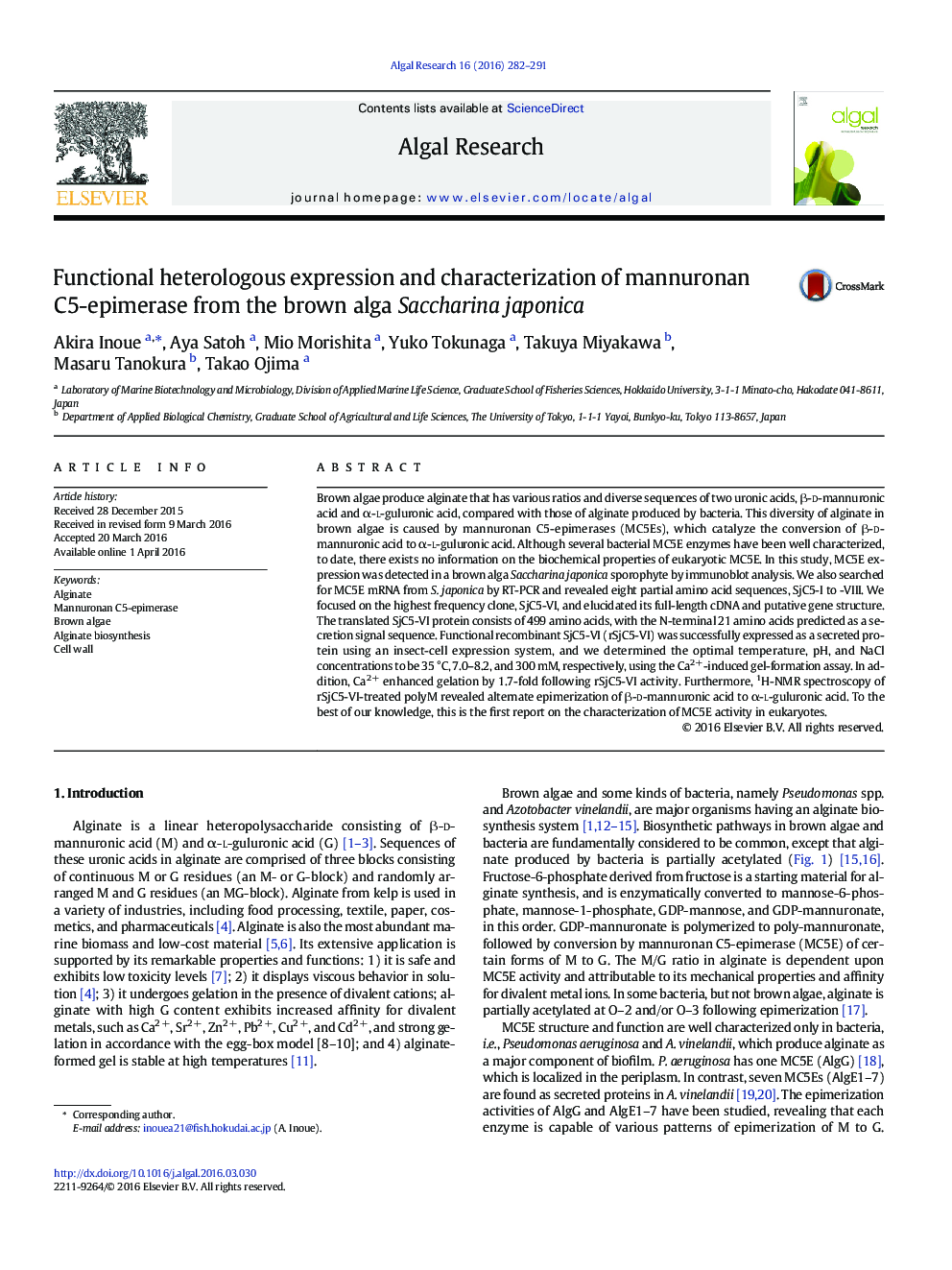| Article ID | Journal | Published Year | Pages | File Type |
|---|---|---|---|---|
| 8087161 | Algal Research | 2016 | 10 Pages |
Abstract
Brown algae produce alginate that has various ratios and diverse sequences of two uronic acids, β-d-mannuronic acid and α-l-guluronic acid, compared with those of alginate produced by bacteria. This diversity of alginate in brown algae is caused by mannuronan C5-epimerases (MC5Es), which catalyze the conversion of β-d-mannuronic acid to α-l-guluronic acid. Although several bacterial MC5E enzymes have been well characterized, to date, there exists no information on the biochemical properties of eukaryotic MC5E. In this study, MC5E expression was detected in a brown alga Saccharina japonica sporophyte by immunoblot analysis. We also searched for MC5E mRNA from S. japonica by RT-PCR and revealed eight partial amino acid sequences, SjC5-I to -VIII. We focused on the highest frequency clone, SjC5-VI, and elucidated its full-length cDNA and putative gene structure. The translated SjC5-VI protein consists of 499 amino acids, with the N-terminal 21 amino acids predicted as a secretion signal sequence. Functional recombinant SjC5-VI (rSjC5-VI) was successfully expressed as a secreted protein using an insect-cell expression system, and we determined the optimal temperature, pH, and NaCl concentrations to be 35 °C, 7.0-8.2, and 300 mM, respectively, using the Ca2 +-induced gel-formation assay. In addition, Ca2 + enhanced gelation by 1.7-fold following rSjC5-VI activity. Furthermore, 1H-NMR spectroscopy of rSjC5-VI-treated polyM revealed alternate epimerization of β-d-mannuronic acid to α-l-guluronic acid. To the best of our knowledge, this is the first report on the characterization of MC5E activity in eukaryotes.
Related Topics
Physical Sciences and Engineering
Energy
Renewable Energy, Sustainability and the Environment
Authors
Akira Inoue, Aya Satoh, Mio Morishita, Yuko Tokunaga, Takuya Miyakawa, Masaru Tanokura, Takao Ojima,
